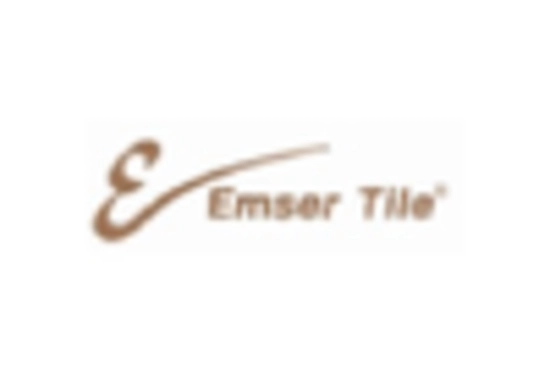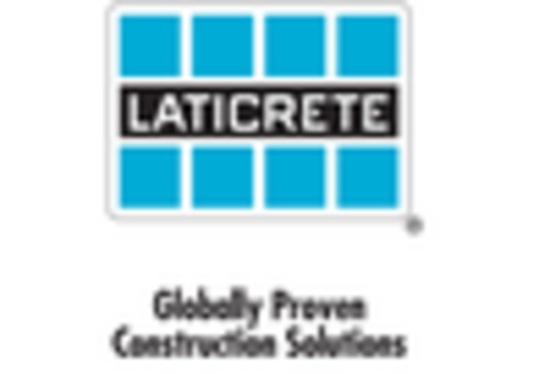Growing Popularity of DIY Projects
The Glass Tile Market is experiencing a surge in popularity due to the increasing trend of DIY home improvement projects. As homeowners seek to personalize their living spaces, glass tiles are often chosen for their versatility and ease of installation. Market data reveals that the DIY segment is projected to grow by approximately 7% annually, driven by the rise of online tutorials and home improvement shows. This trend not only boosts sales in retail outlets but also encourages manufacturers to develop user-friendly products that cater to DIY enthusiasts. Consequently, the Glass Tile Market is likely to expand as more consumers engage in home renovation projects, seeking stylish and functional materials.
Rising Demand for Aesthetic Appeal
The Glass Tile Market experiences a notable increase in demand driven by the growing consumer preference for aesthetic appeal in residential and commercial spaces. As interior design trends evolve, glass tiles are increasingly favored for their ability to enhance visual appeal and create a sense of luxury. The market data indicates that the aesthetic segment of the glass tile market is projected to grow at a compound annual growth rate of approximately 6.5% over the next five years. This trend is particularly evident in urban areas where modern architecture and interior design prioritize unique and visually striking materials. Consequently, manufacturers are focusing on innovative designs and finishes to cater to this demand, thereby propelling the growth of the Glass Tile Market.
Increased Investment in Construction
The Glass Tile Market is significantly influenced by the rising investment in construction activities across various sectors. With urbanization and population growth, there is a surge in residential, commercial, and infrastructural projects. According to recent data, the construction sector is expected to witness a growth rate of around 4.2% annually, which directly correlates with the demand for glass tiles. These tiles are increasingly utilized in high-end projects due to their durability and aesthetic qualities. As builders and architects seek to incorporate modern materials that offer both functionality and style, the glass tile market is poised to benefit from this upward trend in construction investment, thereby enhancing its market presence.
Technological Advancements in Production
The Glass Tile Market benefits from ongoing technological advancements in production processes. Innovations in manufacturing techniques, such as improved kiln technology and automated production lines, enhance the efficiency and quality of glass tiles. These advancements allow for the creation of more intricate designs and finishes, catering to diverse consumer preferences. Market analysis indicates that the adoption of advanced technologies could lead to a reduction in production costs by up to 15%, thereby making glass tiles more accessible to a broader audience. As manufacturers continue to invest in technology, the Glass Tile Market is likely to experience increased competition and product diversity, further stimulating market growth.
Sustainability and Eco-Friendly Materials
The Glass Tile Market is witnessing a shift towards sustainability, with consumers and manufacturers increasingly prioritizing eco-friendly materials. The demand for sustainable building materials is on the rise, as more individuals become aware of environmental issues. Glass tiles, often made from recycled materials, align with this trend, appealing to environmentally conscious consumers. Market data suggests that the eco-friendly segment of the glass tile market is expected to grow by approximately 5% annually. This shift not only reflects changing consumer preferences but also encourages manufacturers to innovate and develop sustainable production processes. As a result, the Glass Tile Market is likely to see a significant transformation, with sustainability becoming a core aspect of product offerings.


















Leave a Comment